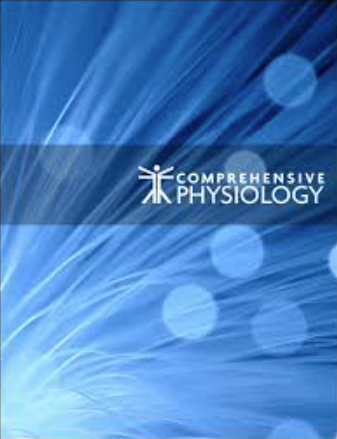下载PDF
{"title":"Obesity, Body Composition, and Sex Hormones: Implications for Cardiovascular Risk.","authors":"Prachi Singh, Naima Covassin, Kara Marlatt, Kishore M Gadde, Steven B Heymsfield","doi":"10.1002/cphy.c210014","DOIUrl":null,"url":null,"abstract":"<p><p>Cardiovascular disease (CVD) continues to be the leading cause of death in adults, highlighting the need to develop novel strategies to mitigate cardiovascular risk. The advancing obesity epidemic is now threatening the gains in CVD risk reduction brought about by contemporary pharmaceutical and surgical interventions. There are sex differences in the development and outcomes of CVD; premenopausal women have significantly lower CVD risk than men of the same age, but women lose this advantage as they transition to menopause, an observation suggesting potential role of sex hormones in determining CVD risk. Clear differences in obesity and regional fat distribution among men and women also exist. While men have relatively high fat in the abdominal area, women tend to distribute a larger proportion of their fat in the lower body. Considering that regional body fat distribution is an important CVD risk factor, differences in how men and women store their body fat may partly contribute to sex-based alterations in CVD risk as well. This article presents findings related to the role of obesity and sex hormones in determining CVD risk. Evidence for the role of sex hormones in determining body composition in men and women is also presented. Lastly, the clinical potential for using sex hormones to alter body composition and reduce CVD risk is outlined. © 2022 American Physiological Society. Compr Physiol 12:1-45, 2022.</p>","PeriodicalId":10573,"journal":{"name":"Comprehensive Physiology","volume":null,"pages":null},"PeriodicalIF":4.2000,"publicationDate":"2021-12-29","publicationTypes":"Journal Article","fieldsOfStudy":null,"isOpenAccess":false,"openAccessPdf":"https://www.ncbi.nlm.nih.gov/pmc/articles/PMC10068688/pdf/nihms-1882873.pdf","citationCount":"7","resultStr":null,"platform":"Semanticscholar","paperid":null,"PeriodicalName":"Comprehensive Physiology","FirstCategoryId":"3","ListUrlMain":"https://doi.org/10.1002/cphy.c210014","RegionNum":2,"RegionCategory":"医学","ArticlePicture":[],"TitleCN":null,"AbstractTextCN":null,"PMCID":null,"EPubDate":"","PubModel":"","JCR":"Q1","JCRName":"PHYSIOLOGY","Score":null,"Total":0}
引用次数: 7
引用
批量引用
Abstract
Cardiovascular disease (CVD) continues to be the leading cause of death in adults, highlighting the need to develop novel strategies to mitigate cardiovascular risk. The advancing obesity epidemic is now threatening the gains in CVD risk reduction brought about by contemporary pharmaceutical and surgical interventions. There are sex differences in the development and outcomes of CVD; premenopausal women have significantly lower CVD risk than men of the same age, but women lose this advantage as they transition to menopause, an observation suggesting potential role of sex hormones in determining CVD risk. Clear differences in obesity and regional fat distribution among men and women also exist. While men have relatively high fat in the abdominal area, women tend to distribute a larger proportion of their fat in the lower body. Considering that regional body fat distribution is an important CVD risk factor, differences in how men and women store their body fat may partly contribute to sex-based alterations in CVD risk as well. This article presents findings related to the role of obesity and sex hormones in determining CVD risk. Evidence for the role of sex hormones in determining body composition in men and women is also presented. Lastly, the clinical potential for using sex hormones to alter body composition and reduce CVD risk is outlined. © 2022 American Physiological Society. Compr Physiol 12:1-45, 2022.
肥胖、身体成分和性激素:对心血管风险的影响。
心血管疾病(CVD)仍然是成人死亡的主要原因,这突出表明需要制定新的策略来降低心血管风险。肥胖症的流行正在威胁着当代药物和手术干预所带来的心血管疾病风险降低的成果。心血管疾病的发展和结局存在性别差异;绝经前女性患心血管疾病的风险明显低于同龄男性,但随着绝经期的过渡,女性失去了这一优势,这一观察表明性激素在决定心血管疾病风险中的潜在作用。男性和女性在肥胖和区域脂肪分布方面也存在明显差异。男性的腹部脂肪含量相对较高,而女性则倾向于在下半身分配更大比例的脂肪。考虑到区域体脂分布是一个重要的心血管疾病风险因素,男性和女性储存体脂方式的差异也可能在一定程度上导致基于性别的心血管疾病风险变化。这篇文章介绍了肥胖和性激素在决定心血管疾病风险中的作用。性激素在决定男性和女性身体组成中的作用的证据也被提出。最后,概述了使用性激素改变身体成分和降低心血管疾病风险的临床潜力。©2022美国生理学会。物理学报(英文版),2012。
本文章由计算机程序翻译,如有差异,请以英文原文为准。



 求助内容:
求助内容: 应助结果提醒方式:
应助结果提醒方式:


